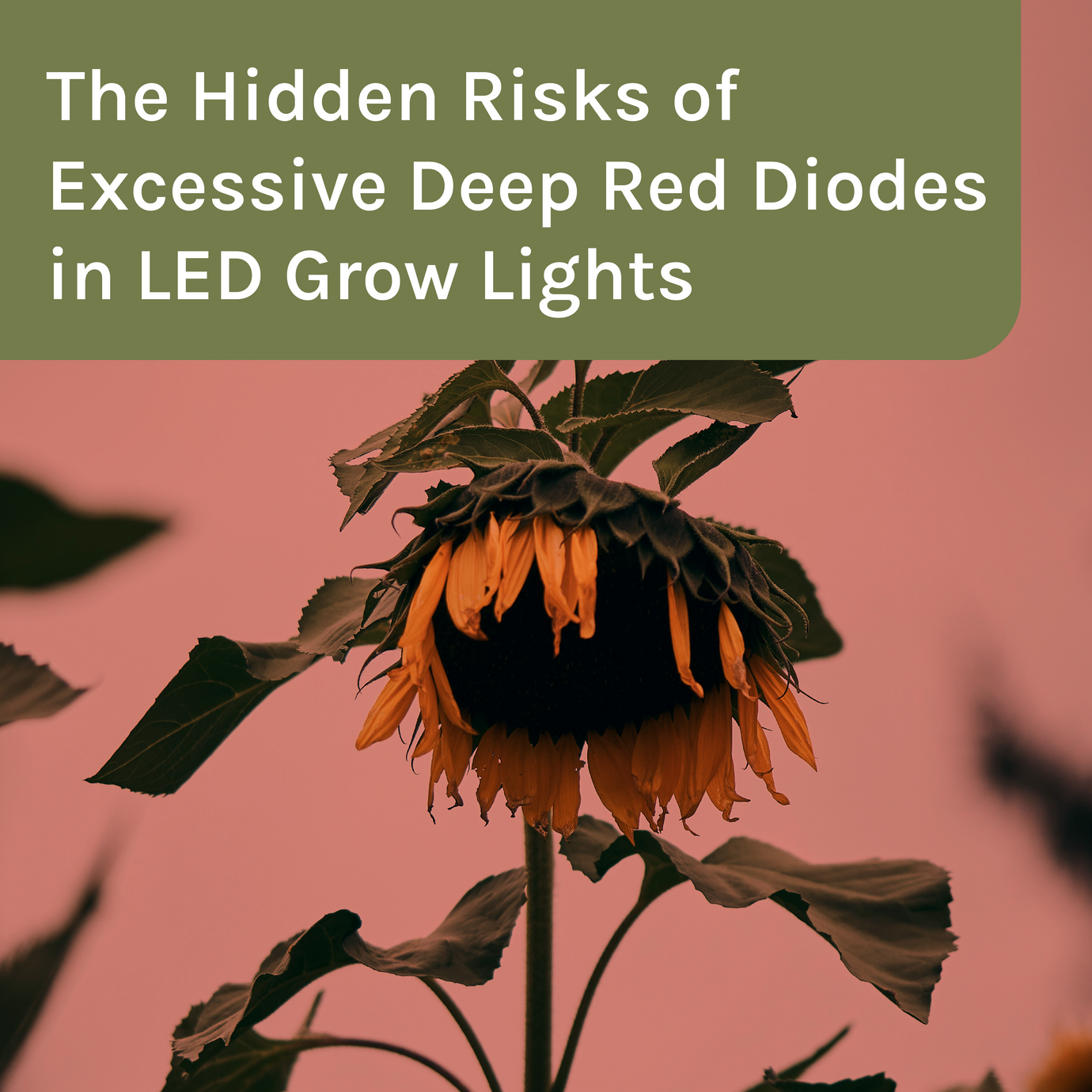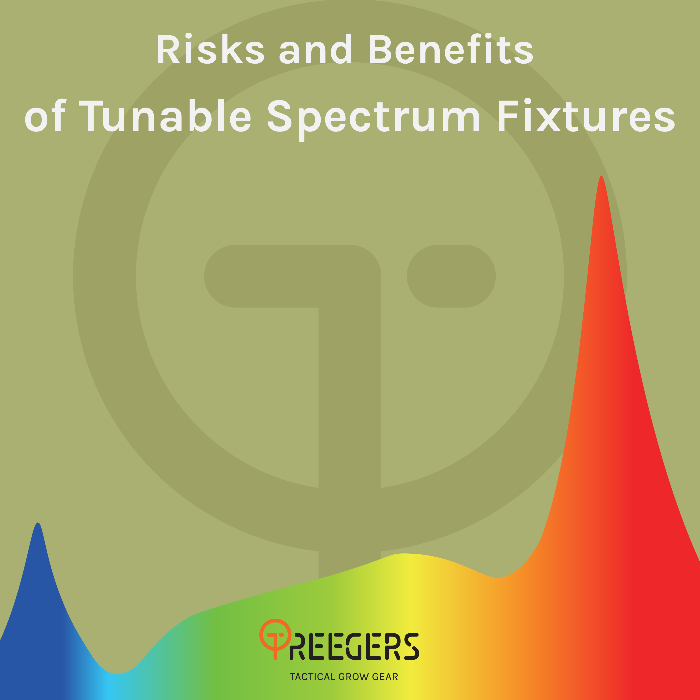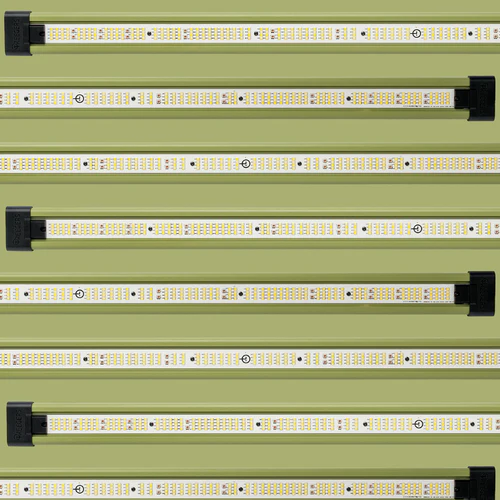PPFD-Messwerte und -Karten: So analysieren Sie sie genau und vermeiden irreführende Daten
Bei der Auswahl einer Pflanzenlampe zählen PPFD-Karten (Photosynthetic Photon Flux Density) zu den am häufigsten herangezogenen Messgrößen. Viele Hersteller von Gartenbeleuchtungen bieten jedoch manipulierte oder irreführende PPFD-Karten mit überhöhten Werten an, die nicht den realen Bedingungen entsprechen. Zu den gängigsten irreführenden Praktiken gehören:
1. Verwendung falscher Testpunktraster, Reduzierung der Messdichte, um mangelnde Gleichmäßigkeit zu verbergen.
2. Tests mit reflektierenden Wänden und Böden, die die PPFD-Werte künstlich erhöhen.
3. Es werden nur die maximalen PPFD-Werte angezeigt, ohne die tatsächliche Verteilung über die Anbaufläche anzuzeigen.
Bei Treegers legen wir Wert auf Genauigkeit und Transparenz. Unsere PPFD-Karten werden in völlig dunklen Räumen ohne reflektierende Oberflächen getestet, um realistische, zuverlässige Daten zu gewährleisten, denen Grower vertrauen können. In diesem Artikel erklären wir, wie PPFD korrekt gemessen wird, wie man irreführende PPFD-Karten erkennt und warum jeder Grower seine Leuchten mit einem PAR-Meter testen sollte, um absolute Genauigkeit zu gewährleisten.
![]() Was ist PPFD und warum ist es wichtig?
Was ist PPFD und warum ist es wichtig?
PPFD (gemessen in µmol/m²/s) gibt die Dichte der Photonen im PAR-Bereich (400–700 nm) an, die pro Sekunde das Pflanzendach erreichen. Sie gibt an, wie viel nutzbares Licht die Pflanzen erhalten. Ein höherer PPFD bedeutet nicht immer besser! Die Lichtintensität muss gleichmäßig verteilt sein, um Hotspots (Bereiche mit übermäßigem Licht) und Low Zones (Bereiche mit unzureichendem Licht) zu vermeiden. Gleichmäßigkeit ist ebenso wichtig wie Intensität. Um genaue und aussagekräftige PPFD-Daten zu gewährleisten, müssen die Tests branchenüblichen Messrastern folgen und in einer kontrollierten Umgebung durchgeführt werden.
Die richtige Methode zur Messung der PPFD
Ein ordnungsgemäß durchgeführter PPFD-Test sollte diesen wesentlichen Richtlinien folgen:
1.PPFD muss in einem nicht reflektierenden, dunklen Raum gemessen werden
Viele Hersteller testen ihre Wachstumslampen in reflektierenden Zelten oder Räumen, die die PPFD-Werte durch die Lichtreflexion im Raum künstlich erhöhen. Dies entspricht nicht der tatsächlichen Leistung in einer Standard-Anbauumgebung. Bei Treegers werden alle PPFD-Karten in einem völlig dunklen Raum ohne reflektierende Oberflächen getestet, um echte, unverfälschte Daten zu gewährleisten.
2. Die richtige Anzahl von Testpunkten pro Abdeckungsbereich
Einige Marken reduzieren die Anzahl der PPFD-Messpunkte, um eine mangelnde Gleichmäßigkeit zu kaschieren. Ein Raster mit geringer Dichte kann eine ungleichmäßige Leuchte ausgewogener erscheinen lassen, als sie tatsächlich ist. Ein standardmäßiges, genaues PPFD-Raster sollte dieser Messdichte entsprechen:
1. 0,8 mx 0,8 mx 36 Punkte (6x6 Raster)
2. 1,0 m x 1,0 m bis 1,2 m x 1,2 m – 64 Punkte (8 x 8 Raster)
3. 1,5 m x 1,5 m – 100 Punkte (10 x 10 Raster)
Warnung: Eine PPFD-Karte mit weniger Punkten stellt die Gleichmäßigkeit möglicherweise nicht genau dar. Treegers verwendet stets die richtige Anzahl an Testpunkten für genaue und zuverlässige Lichtkarten.
3. So identifizieren Sie manipulierte PPFD-Karten
Leider übertreiben oder manipulieren viele Marken die PPFD-Karten, um ihre Lichter stärker erscheinen zu lassen. Hier sind einige Warnsignale:
1. Verdächtig hohe PPFD-Werte, die unrealistisch erscheinen.
2. Fehlende PPFD-Rasterdaten (wenn nur Spitzenwerte angezeigt werden, ist das ein Warnsignal).
3. Seltsam einheitliche Messwerte, die auf softwaregenerierte Zahlen und nicht auf echte Tests hinweisen können.
Bei Treegers stellen wir reale, unveränderte PPFD-Karten zur Verfügung, damit die Anbauer fundierte Entscheidungen treffen können.
Warum jeder Grower ein PAR-Meter besitzen sollte
Selbst mit genauen PPFD-Karten sollte sich kein Grower ausschließlich auf Herstellerangaben verlassen. Jede Anbauumgebung ist anders, und Faktoren wie Leuchtenhöhe, Kronendachdichte und Umgebungsbedingungen können die tatsächlichen PPFD-Werte beeinflussen. Wie überprüfen Sie Ihre Beleuchtungsanlage am besten? Mit einem PAR-Meter. Ein Quantum-PAR-Meter misst die tatsächlichen PPFD-Werte in Ihrem spezifischen Anbauraum präzise. Es hilft Growern, die Höhe und Anordnung der Leuchten für eine gleichmäßigere Lichtverteilung anzupassen. Stellt sicher, dass Sie in jeder Wachstumsphase die richtigen PPFD-Ziele erreichen.
Profi-Tipp: Führen Sie PPFD-Messungen in Ihrem gesamten Anbaugebiet durch, um Hotspots oder lichtschwache Zonen zu identifizieren. Wenn die PPFD-Karte Ihres Herstellers korrekt war, sollten Ihre Messwerte weitgehend mit den Angaben übereinstimmen.
![]() Treegers: Echte PPFD-Daten, denen Sie vertrauen können
Treegers: Echte PPFD-Daten, denen Sie vertrauen können
Bei Treegers setzen wir auf Transparenz und Präzisionstechnik. Deshalb: Unsere PPFD-Karten werden in einem reflexionsfreien Dunkelraum getestet, um präzise Ergebnisse zu erzielen. Wir folgen branchenüblichen Messrastern mit korrekten Testpunkten. Unsere Leuchten bieten hohe Intensität bei höchster Gleichmäßigkeit und gewährleisten so eine praxisnahe Leistung. Wir empfehlen Growern, ihre Lichtstärke mit einem PAR-Meter zu überprüfen. Bei der Wahl der richtigen Pflanzenlampe kommt es nicht nur auf hohe PPFD-Werte an, sondern auf eine reale, messbare Leistung in Ihrem Anbauraum.
Fazit
Viele Hersteller manipulieren PPFD-Karten mit reflektierenden Testumgebungen oder unzureichenden Messpunkten und wecken so unrealistische Erwartungen. Richtige PPFD-Tests müssen in einem dunklen Raum mit einem hochdichten Messraster durchgeführt werden. Zusätzlich sollten Grower ihre Lichtstärke stets mit einem PAR-Meter überprüfen, um optimale Wachstumsbedingungen zu gewährleisten.






